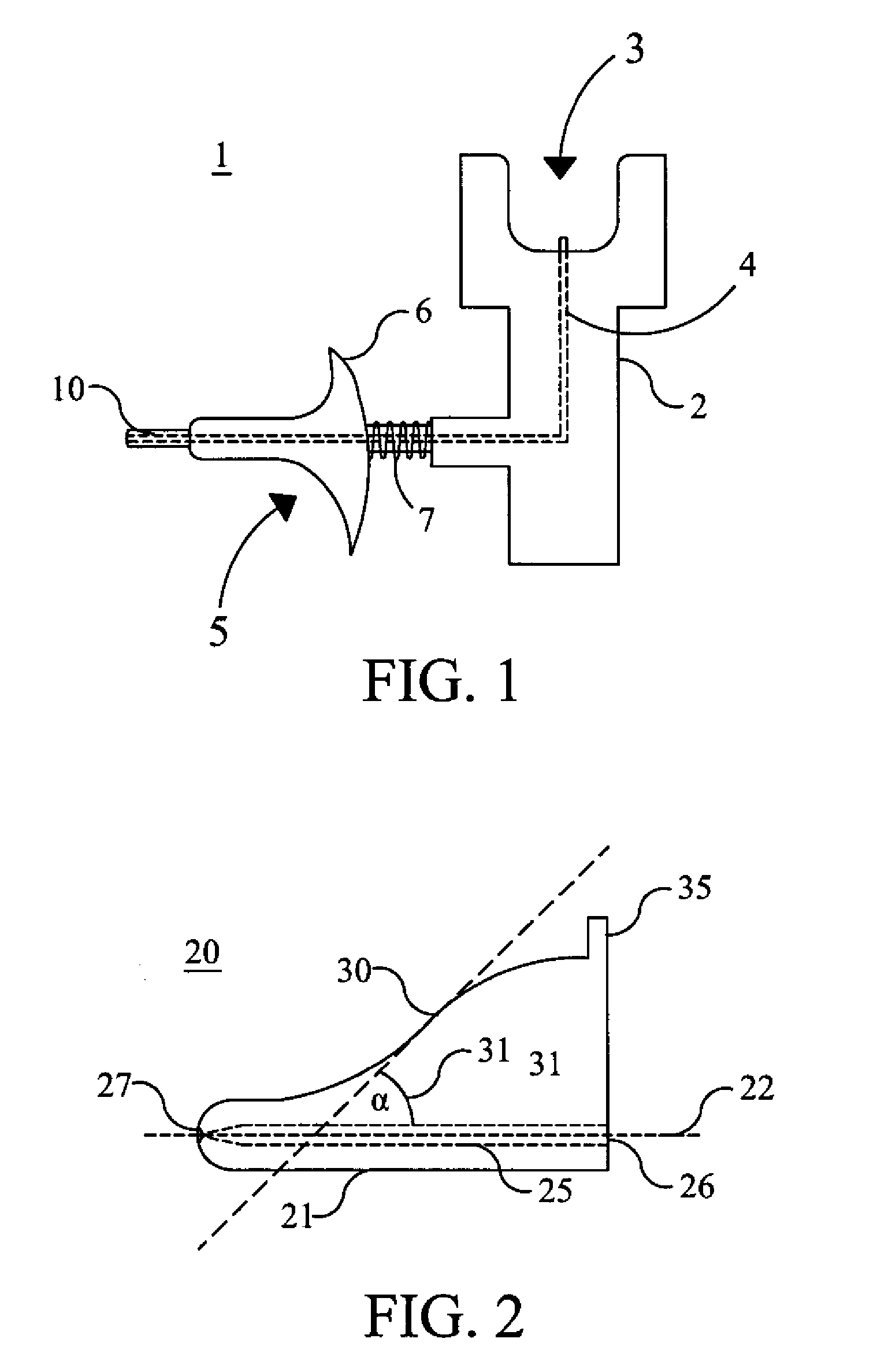Method for intranasal administration of a pharmaceutical composition
a technology of intranasal administration and pharmaceutical composition, which is applied in the field of inhalator, can solve the problems of reducing the amount of operating time needed, preventing cross-contamination between animals, and pulling out the complete apparatus from the operator's hand, so as to prevent cross-contamination. , the effect of reducing the stress of the animal
- Summary
- Abstract
- Description
- Claims
- Application Information
AI Technical Summary
Benefits of technology
Problems solved by technology
Method used
Image
Examples
example 1
[0028]When a herd of 960, 3-21 days of age calves has to be treated via intra-nasal administration of a pharmaceutical composition, the veterinarian assembles the required components. In this embodiment, the treatment is a vaccination for respiratory protection of cattle. For this treatment the veterinarian takes 20 boxes of the 50 dose presentations of the Onset™ 5 IN vaccine, a PUMP-IT™ Vaccinator and 50 cannulas that fit this Vaccinator. At the site where the calves are, the vaccine in the first box is reconstituted in BlueShadow Sterile Diluent™ according to manufacturer instructions, and the bottle containing the reconstituted vaccine is connected to the Vaccinator. The veterinarian attaches a bag to his belt, which bag holds the 50 cannulas. A first cannula is taken out of the bag and is slidably connected to the Vaccinator (before or after the bottle containing the vaccine is connected to the Vaccinator). The cannula is inserted into the nasal cavity of a first calf via the c...
PUM
 Login to View More
Login to View More Abstract
Description
Claims
Application Information
 Login to View More
Login to View More - R&D
- Intellectual Property
- Life Sciences
- Materials
- Tech Scout
- Unparalleled Data Quality
- Higher Quality Content
- 60% Fewer Hallucinations
Browse by: Latest US Patents, China's latest patents, Technical Efficacy Thesaurus, Application Domain, Technology Topic, Popular Technical Reports.
© 2025 PatSnap. All rights reserved.Legal|Privacy policy|Modern Slavery Act Transparency Statement|Sitemap|About US| Contact US: help@patsnap.com



